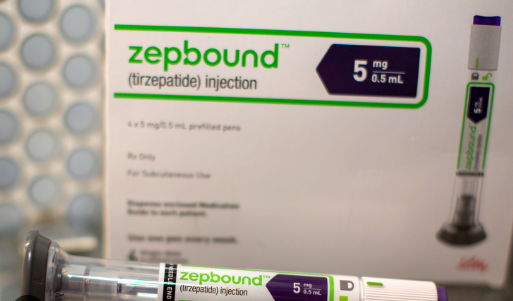“Tirzepatide and non-alcoholic fatty liver disease”
Tirzepatide and Non-alcoholic Fatty Liver Disease (NAFLD) in detail.
- Understanding the Conditions:
Tirzepatide: An injectable medication approved as Mounjaro for Type 2 Diabetes (T2D) and Zepbound for chronic weight management. It’s a dual GIP (glucose-dependent insulinotropic polypeptide) and GLP-1 (glucagon-like peptide-1) receptor agonist. It works by improving insulin sensitivity, regulating blood sugar, suppressing appetite, and inducing significant weight loss.
Non-alcoholic Fatty Liver Disease (NAFLD): A very common condition characterized by the accumulation of excess fat (steatosis) in the liver cells, unrelated to significant alcohol consumption. NAFLD exists on a spectrum:
NAFL (Non-alcoholic Fatty Liver): Simple fat accumulation without significant inflammation or liver cell damage. Generally considered less harmful in the short term.
NASH (Non-alcoholic Steatohepatitis): A more severe form where fat accumulation is accompanied by liver inflammation (hepatitis) and liver cell injury (ballooning). NASH is concerning because it can progress to:
Fibrosis: Scarring of the liver tissue.
Cirrhosis: Advanced, irreversible scarring that severely impairs liver function.
Liver Failure: End-stage liver disease.
Hepatocellular Carcinoma (HCC): Liver cancer.
Metabolic Link: NAFLD/NASH is strongly associated with features of metabolic syndrome, including obesity (especially abdominal obesity), insulin resistance (IR), Type 2 Diabetes, and dyslipidemia (high triglycerides, low HDL cholesterol). IR and obesity are considered key drivers of the disease.
- The Rationale: Why Might Tirzepatide Help NAFLD/NASH?
There’s a strong biological rationale and growing clinical evidence suggesting Tirzepatide can be beneficial for NAFLD/NASH, primarily through these mechanisms:
Significant Weight Loss (Primary Mechanism): Weight loss is the cornerstone of NAFLD/NASH management. Losing ≥5% of body weight can reduce liver fat (steatosis), ≥7% can help resolve NASH inflammation, and ≥10% may lead to regression of fibrosis in some patients.
Tirzepatide induces substantial weight loss (averaging 15-22% in clinical trials), directly addressing this primary therapeutic goal.
Improved Insulin Sensitivity: Insulin resistance is a fundamental factor in the development and progression of NAFLD/NASH. Tirzepatide directly enhances insulin sensitivity through its dual GIP and GLP-1 actions. This helps reduce the flow of fatty acids to the liver, decrease liver fat production (de novo lipogenesis), and improve overall metabolic health, thereby alleviating stress on the liver.
Improved Glycemic Control: In patients with T2D, Tirzepatide leads to significant improvements in blood sugar levels (A1c). Better glycemic control reduces glucotoxicity, which contributes to liver inflammation and fibrosis.
Potential Direct Liver Effects: Both GLP-1 and GIP receptors are found in the liver. Preclinical and some clinical data suggest that GLP-1 receptor agonists might have direct anti-inflammatory, anti-steatotic (fat-reducing), and potentially anti-fibrotic effects on liver cells, independent of weight loss. The contribution of GIP agonism in this context is still being explored but is thought to be potentially additive or synergistic.
Favorable Effects on Lipids: Tirzepatide has been shown to improve lipid profiles, particularly reducing triglycerides, which can also contribute positively to reducing liver fat.
- Clinical Evidence:
Evidence supporting Tirzepatide’s use in NAFLD/NASH comes from several sources:
Sub-studies and Post-hoc Analyses of T2D/Obesity Trials: The large SURPASS (T2D) and SURMOUNT (Obesity) clinical trial programs often included secondary endpoints or exploratory analyses related to liver health:
Liver Fat Reduction: Studies using imaging techniques like MRI-PDFF (Proton Density Fat Fraction) consistently showed that Tirzepatide treatment led to significant reductions in liver fat content compared to placebo or active comparators (like insulin or other GLP-1s). This reduction was strongly correlated with the amount of weight lost.
Improvement in Liver Enzymes: Levels of liver enzymes like ALT (alanine aminotransferase) and AST (aspartate aminotransferase), which are often elevated in NAFLD/NASH indicating liver injury, were significantly reduced with Tirzepatide treatment.
Dedicated NASH Trial (SYNERGY-NASH Phase 2): This is crucial evidence. Eli Lilly conducted a Phase 2 trial specifically evaluating different doses of Tirzepatide (5mg, 10mg, 15mg) versus placebo in patients with biopsy-confirmed NASH and moderate-to-severe fibrosis (stages F2 or F3).
Key Findings (Based on reported top-line results, pending full peer-reviewed publication): The trial met its primary endpoint. A significantly higher percentage of patients treated with Tirzepatide achieved NASH resolution (disappearance of inflammation and ballooning) without worsening of fibrosis after 52 weeks, compared to placebo across all dose groups. Furthermore, Tirzepatide also showed a significant improvement in fibrosis (reduction of at least one stage) without worsening of NASH compared to placebo, particularly at the higher doses. These results are considered highly promising for NASH treatment.
- Clinical Implications and Future Outlook:
Promising Therapeutic Option: Tirzepatide (and related incretin mimetics like Semaglutide, which also has positive NASH data) are emerging as potentially groundbreaking treatments for NASH, a disease with high prevalence and previously very limited effective pharmacological options.
Ideal Target Population: It seems particularly well-suited for the large overlap population of individuals with NAFLD/NASH who also suffer from obesity and/or Type 2 Diabetes.
Need for Long-Term Data: While the Phase 2 results on histology (NASH resolution, fibrosis improvement) are encouraging, longer-term studies (Phase 3 and beyond) are needed to confirm these benefits and demonstrate an impact on preventing progression to cirrhosis, liver failure, and liver cancer.
Regulatory Status for NASH: As of early 2025, while Tirzepatide is approved for T2D (Mounjaro) and weight management (Zepbound), it does not yet have specific regulatory approval (e.g., from FDA or ANVISA in Brazil) for the indication of treating NASH. Doctors might prescribe it off-label based on clinical judgment for patients with NASH, especially if they also have T2D or meet criteria for obesity treatment. Achieving a specific NASH indication requires completion of Phase 3 trials and regulatory review.
- Important Considerations:
Current Approvals: Remember the current approved uses (T2D, weight management).
Medical Supervision: Use requires a prescription and ongoing monitoring by a healthcare professional.
Side Effects: The common gastrointestinal side effects (nausea, vomiting, diarrhea, etc.) apply.
Contraindications: Standard contraindications (e.g., history of MTC/MEN2) must be considered.
Conclusion:
Tirzepatide demonstrates significant potential as a treatment for Non-alcoholic Fatty Liver Disease (NAFLD) and its more aggressive form, Non-alcoholic Steatohepatitis (NASH). Its benefits appear primarily driven by its potent ability to induce weight loss and improve insulin sensitivity, addressing the core metabolic drivers of the disease. Supportive evidence comes from substantial reductions in liver fat and enzymes seen in large diabetes and obesity trials, and highly promising results from a dedicated Phase 2 NASH trial showing significant improvements in both NASH resolution and liver fibrosis. While awaiting results from larger, longer-term studies and specific regulatory approval for NASH, Tirzepatide represents a major therapeutic prospect for this prevalent and serious liver condition, particularly for patients within the spectrum of metabolic syndrome.

“Tirzepatide and non-alcoholic fatty liver disease”
Route
Doctor G Medical Excellence: Health Well-being and Longevity
URL: https://doctorgmed.com/
| Monday | 09:00 - 17:00 |
| Tuesday | 09:00 - 17:00 |
| Wednesday | 09:00 - 17:00 |
| Thursday | 09:00 - 17:00 |
| Friday | 09:00 - 17:00 |
| Saturday | 09:00 - 17:00 |
| Sunday | Closed |







